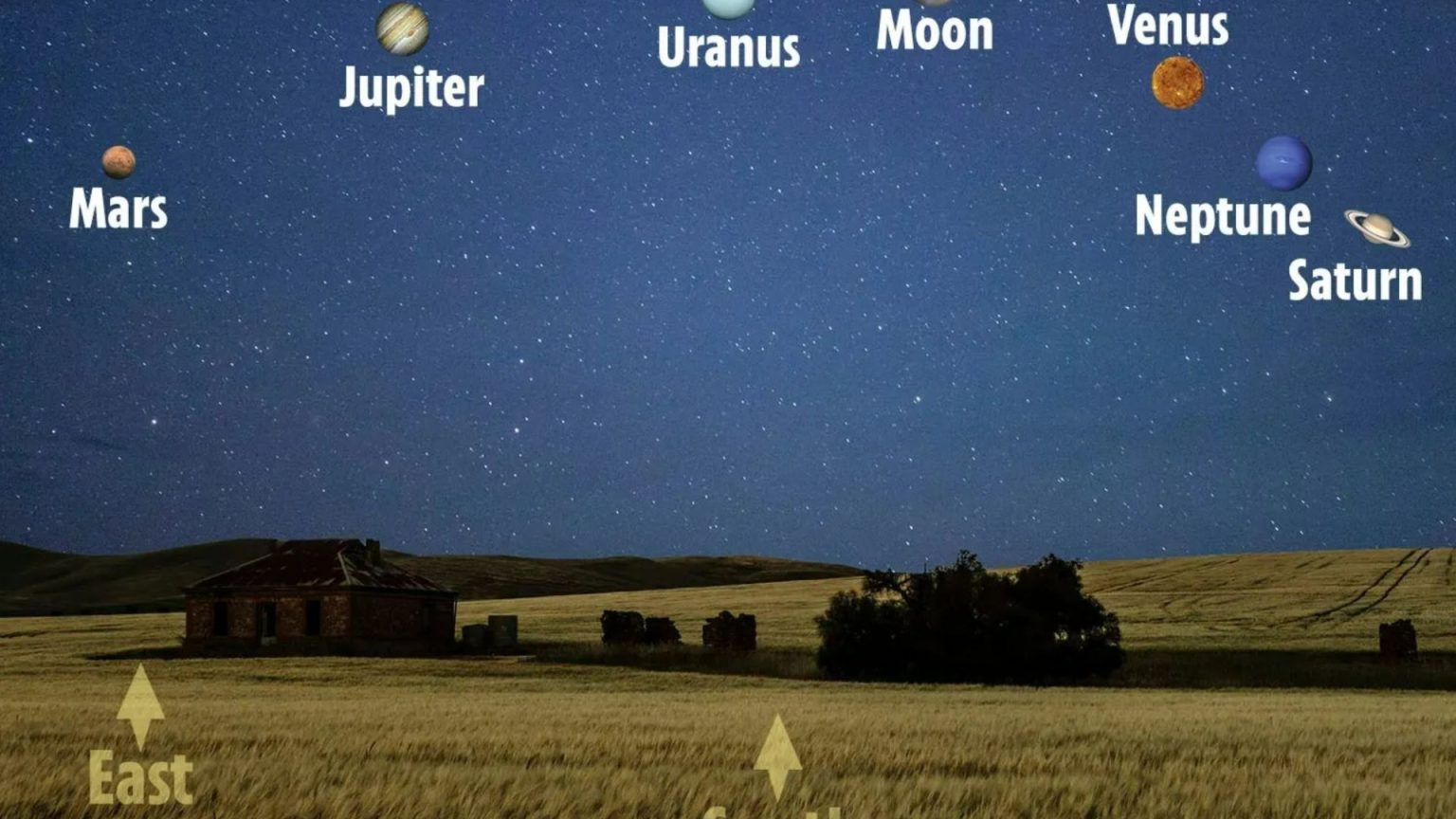The celestial stage is set for a spectacular planetary performance next week as six planets – Mars, Jupiter, Uranus, Neptune, Saturn, and Venus – align in a grand arc across the evening sky. This celestial phenomenon, often referred to as a “planetary parade,” will offer skywatchers a unique opportunity to witness the majority of our solar system’s planets within a single field of view. While Mercury and Earth will be absent from this cosmic gathering, the remaining six planets will stretch across the heavens, creating a breathtaking spectacle.
This remarkable alignment becomes visible around 5pm local time on January 18th, peaking in brilliance around 6pm before gradually fading from view by 9pm. During this optimal viewing window, Mars, Venus, and Saturn will be positioned approximately 20 degrees above the horizon, easily discernible due to their inherent brightness. Mars, Venus, and Jupiter will stand out as the most luminous objects in the sky, while Saturn, although slightly fainter, will still be readily identifiable due to its proximity to the dazzling Venus. Uranus and Neptune, however, will remain invisible to the naked eye due to their vast distance from Earth.
The seemingly choreographed dance of these celestial bodies is a result of their individual orbits around the Sun. As each planet follows its unique elliptical path, there are times when their positions relative to Earth create the illusion of alignment. This planetary alignment occurs with some frequency, though the visibility and number of planets involved can vary. Another similar alignment is expected in February, featuring Mars, Jupiter, Venus, Saturn, and Mercury. On February 24th, Mercury will join the planetary grouping, passing close to Saturn, further enhancing the celestial display.
The mechanics of planetary alignment are rooted in the orbital dynamics of our solar system. All planets, including Earth, orbit the Sun in approximately the same plane, known as the ecliptic. This shared orbital plane means that, from our perspective on Earth, the planets appear to move along a relatively narrow band in the sky, much like cars travelling along a straight road. Variations in the planets’ orbital speeds and distances from the Sun dictate their relative positions and how close they appear to each other at any given time. The current alignment presents a unique configuration where the planets are positioned within a relatively small arc of the sky, making them simultaneously visible.
To fully appreciate this celestial spectacle, it is recommended to venture outdoors early, preferably before the peak viewing time of 6pm, to allow your eyes to adjust to the darkening sky. This will enhance your ability to locate Saturn, which is less bright than its planetary companions. Selecting a viewing location with an unobstructed view of the sky, free from the interference of trees or buildings, is crucial. Ideally, an open area with a clear view from northeast to southwest, down to the horizon, will provide the best vantage point for observing the full extent of the planetary parade.
No specialized equipment, such as binoculars or telescopes, is required to enjoy this celestial event. The inherent brightness of the planets makes them easily visible to the naked eye. In fact, such instruments may even limit your field of view, hindering your ability to appreciate the full extent of the planetary alignment. While observing the planets individually is readily achievable, capturing a photograph of Venus and Saturn together, perhaps framed by an interesting landscape feature, could offer a memorable memento of this astronomical occurrence. For those less familiar with celestial navigation, sky map apps, like Night Sky, can prove invaluable in locating and identifying the planets.
The upcoming planetary alignment offers a unique opportunity to contemplate the vastness and intricate workings of our solar system. While planetary alignments are predictable astronomical events, their visual impact remains a captivating reminder of the dynamic interplay of celestial bodies. This week’s alignment provides a chance to witness a celestial choreography that unfolds over cosmic timescales, momentarily visible from our vantage point on Earth. So, step outside, look up, and marvel at the wonders of our solar system on display.


